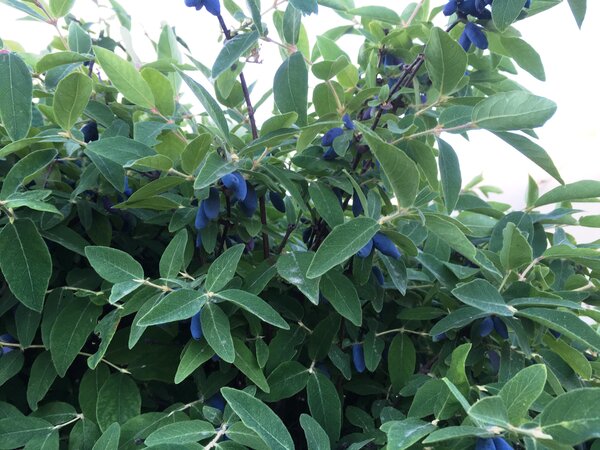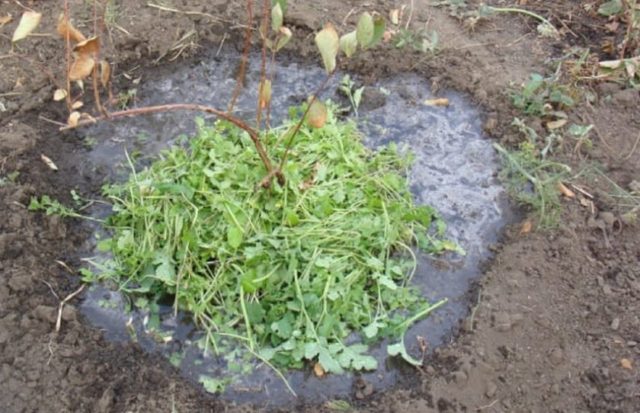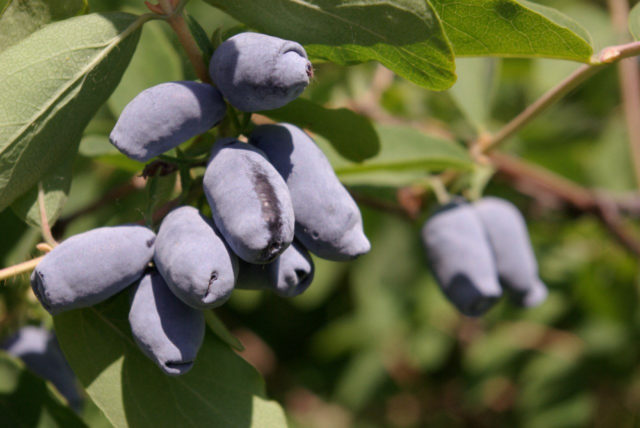Content
Description of the variety, photos and reviews of honeysuckle Bell give a complete picture of the plant. This variety has almost no disadvantages other than the inability to grow in the southern regions. Despite the relative youth, the variety is grown by gardeners and gardeners in all cold areas.

Honeysuckle Bellflower can reach a height of 2 m, the bush is often lush, slightly spreading
Description of honeysuckle variety Kolokolchik
This variety was bred in 1979 at the Pavlovsk Experimental Station. It is a particularly hardy shrub species that does not tolerate warm winters.
Honeysuckle of the Kolokolchik variety is a deciduous species, according to the description, photos and reviews of gardeners, two meters in height. Young branches are slightly pubescent, light green in color. Mature shoots have a brown bark with a yellow tint. Leaves are bright green, oblong-ovoid.
Flowering occurs in May, butoas are light yellow, almost white. The inflorescences are located in the leaf axils, and the first fruits ripen in mid-June. The berries have a rounded base and a wide, flat top. The taste is sweet and sour, the aroma is rich, the pulp is juicy.
Honeysuckle Bellflower can withstand frost down to -40 ° C, and flowers do not fall when the temperature drops to 8 ° C. The plant is able to survive drought, but the berries become smaller, and a bitterness appears in the taste. To avoid this, 2 buckets of water are poured under each bush.
Planting and caring for honeysuckle Bell
Honeysuckle of the Kolokolchik variety is recommended to be planted either in very early spring, when the plant has not yet woken up, or in the fall, when the leaves have already fallen off. Landing must be done with a lump of soil.
A sandy-clay type soil, slightly acidic, is suitable for a bush. A place to choose is advised to be sunny, protected from strong winds. If there is no such combination, you can artificially fence the seedling by stretching a thin covering material or film as a wall.
Before planting, prepare holes 50 cm deep and with sides of the same size. Put 2 buckets of compost inside, the removed soil is mixed with wood ash (1 kg) and superphosphate (50 g), poured into the hole with a hill. Then they start landing:
- The roots are distributed along the edges of the hill in the hole, watered and sprinkled with earth a little.
- The pit is covered with soil, the plant is watered at the root, avoiding water getting on the trunk.
- Mulch the ground with leaves, sawdust or grass. It is not advised to use any parts of conifers, they contribute to a sharp increase in soil acidity.
After planting, the honeysuckle bellflower will need to be weeded regularly until the seedling has grown enough. You also need to be careful not to touch the roots, loosen the soil. Watering is necessary only in hot dry years. You will need to pour 2 buckets of water under the plant once a week.
Pruning the first 10 years of life of honeysuckle A bell is not needed, the usual removal of dry and diseased branches is enough. If the yield drops sharply, the entire bush is cut off, almost at the root, so that the plant will give new shoots.
Fertilizers are applied every 3 years, ready-made complex fertilizers are used or 5 kg of manure, 20 g of potassium salt and 50 g of superphosphate are mixed.
No special preparation for winter is needed. Before wintering, you only need:
- remove mulch, crumbling leaves;
- cut off dead branches;
- cut out 1-2 of the oldest branches so that there is room for new shoots to grow.
It is also permissible to add 30 g of superphosphate and 20 g of potassium salt, so that the plant can better endure the winter.

Planting honeysuckle Bell is advised in early spring or after the leaves fall, in the fall
Reproduction of honeysuckle varieties Bell
Honeysuckle Bellflower is propagated by four methods - seeds, layering, bush division and cuttings.
To propagate by layering, proceed as follows:
- In the spring, before the juices begin to move, tilt several branches.
- Press and sprinkle with earth.
- The cuttings should take root from 2 weeks to 2 months.
- Once rooted, they are cut and placed as seedlings.
If it is not possible to bend the branches, it is permissible to cut the bark, stepping back 17 cm from the top of the branch, attach the moss, close it with plastic and fix it. This is how air layers are obtained, which are planted as usual.
For propagation of honeysuckle, the bell should be cut into young branches in early spring or after the first ovaries. It is desirable that each have 2 buds and 3-4 cm for planting. The cuttings are kept in water for 24 hours, then planted in the ground.
Dividing a bush is only suitable for already formed plants. In early spring, before the buds awaken, part of the bush is dug up and transplanted to a new place. Moving must be done together with the soil so as not to damage the roots.
Seed propagation does not guarantee the preservation of varietal qualities and takes a long time.
Step by step process:
- Seeds are stratified for 2 months in the refrigerator.
- They are sown in trays with soil (it is advisable to add compost to the ground), deepening by 1 cm.
- After 2 months, when shoots appear, the seedlings are dived into separate pots.
- At the beginning of summer, young plants are planted in the ground, having previously hardened in the fresh air.
Also, honeysuckle Bellflower gardeners advise, contrary to the opinions of some experts, to propagate and plant only in spring, so that the plant will take root by autumn.
The best pollinators of honeysuckle varieties Kolokolchik
This variety requires pollinators, it is self-fertile. For honeysuckle, the Bell is recommended by such neighbors as Tomichka, Cinderella, X, Blue Spindle or a variety in Memory of Gidzyuk.
Diseases and pests
Honeysuckle Bellflower is resistant to pests, little susceptible to disease. Most of all, the bushes are harmed by birds, the berries are protected from them, simply by covering them with a frequent net.
Sometimes bellflower honeysuckle suffers from caterpillars, scale insects, honeysuckle mites and aphids, pollen flies, leafworms.
Of the diseases, fungi and powdery mildew are common. For treatment and prevention use "Fundazol" and chemicals from parasites.
It is not recommended to use drugs on a fruiting bush, the treatment is carried out either after fruiting or before the ovary of berries.

One of the best Bellflower pollinators is the Cinderella cultivar
Conclusion
Through the description of the variety, photos and reviews of the bell honeysuckle, it can be seen that this variety is not suitable for small areas, the bush is too tall. The advantages are also noticeable - resistance to frost and parasites. The only drawback of Honeysuckle Bellflower is that it does not tolerate drought and heat well.








